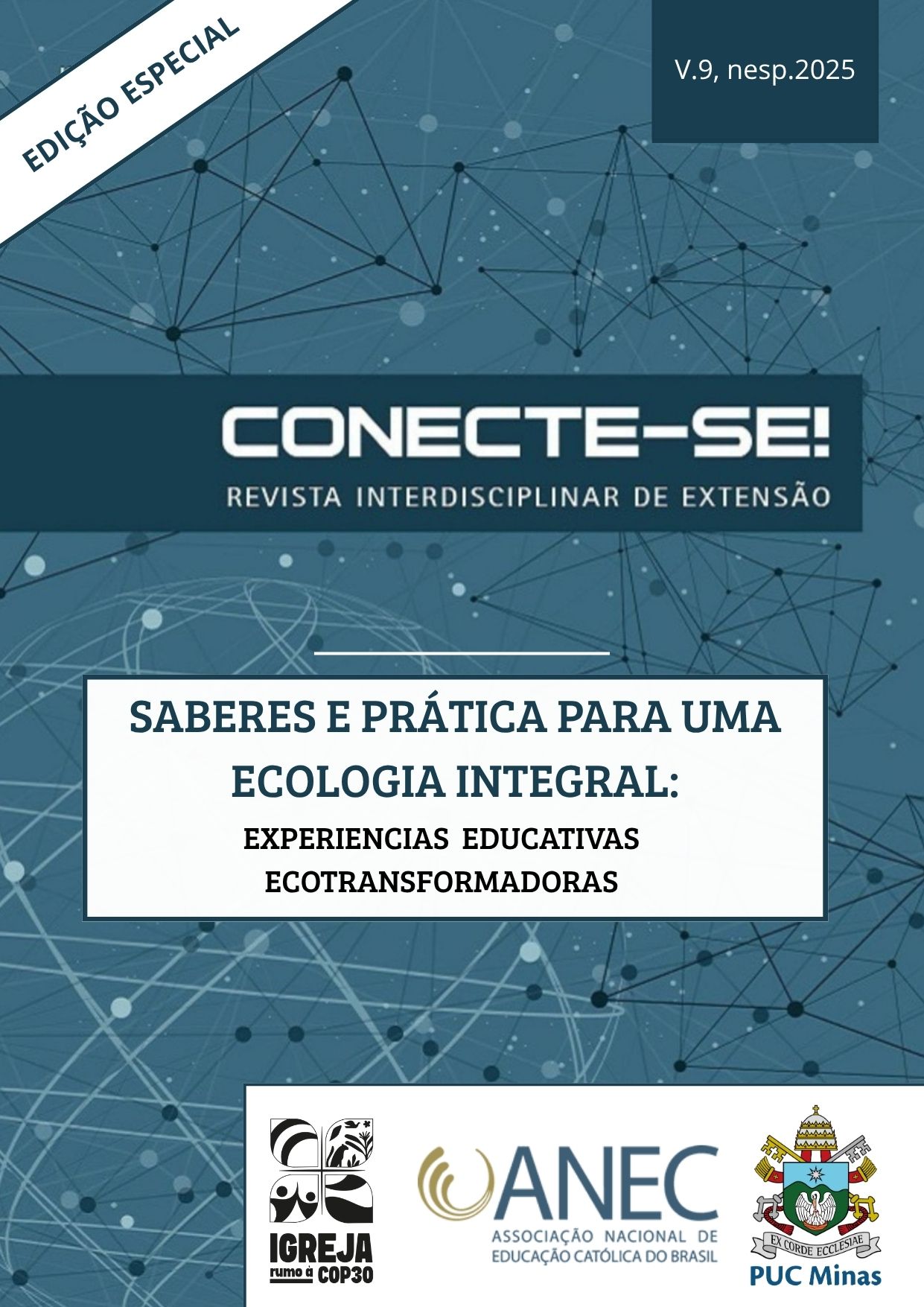IMPACT OF FOREST FIRES ON INDIGENOUS VILLAGES IN THE MUNICIPALITY OF ARACRUZ/ES
Keywords:
biodiversity, fires, geospatial monitoring, socio-environmental vulnerability, traditional peoplesAbstract
The municipality of Aracruz, in the state of Espírito Santo, is home to several indigenous villages of the Tupiniquim and Guarani peoples. These groups have been facing several challenges related to territorial loss, massive eucalyptus production, and weak public policies. In this context, forest fires represent a significant threat to indigenous territories, directly affecting life in the villages, local biodiversity, and natural resources essential to the subsistence of the communities. This study aimed to analyze the occurrence of fire outbreaks near the villages, by cross-referencing the geographic coordinates of the villages with fire data obtained via satellite. The results revealed the occurrence of 23 fire outbreaks within a radius of up to 1 km from the villages, between 2004 and 2021. The village of Olho D’Água had nine records of nearby fires, with the closest outbreak only 197 meters away. Other villages, such as Caieiras Velha, Pau Brasil, and Boa Esperança, also demonstrated significant exposure to fire. The data reinforce the vulnerability of these territories to fire events, especially during the dry months, and highlight the urgency of public policies that strengthen fire prevention and control strategies on indigenous lands.
Downloads
References
ARACRUZ. Aracruz é o único município capixaba que possui aldeias indígenas. Aracruz: Secretaria de Comunicação, 2017. Disponível em: https://aracruz.es.gov.br/noticias/6319-aracruz-e-o-unico-municipio-capixaba-que-possui-aldeias-indigenas. Acesso em: 10 jun. 2025.
BRASIL. Lei Nº 14.944, de 31 de julho de 2024. Institui a Política Nacional de Manejo Integrado do Fogo e altera as Leis nºs 7.735, de 22 de fevereiro de 1989, 12.651, de 25 de maio de 2012 (Código Florestal), e 9.605, de 12 de fevereiro de 1998 (Lei dos Crimes Ambientais). Brasília, DF: 2024. Disponível em: https://www.planalto.gov.br/ccivil_03/_ato2023-2026/2024/lei/L14944.htm. Acesso em: 10 jun. 2025.
FALLEIRO, Rodrigo de Moraes; SANTANA, Marcelo Trindade; BERNI, Cendi Ribas. As Contribuições do Manejo Integrado do Fogo para o Controle dos Incêndios Florestais nas Terras Indígenas do Brasil. Biodiversidade Brasileira, v. 6, nº 2, p. 88-105, 2016.
FERREIRA, Simone Raquel Batista. “Donos do Lugar”: a territorialidade quilombola do Sapê do Norte - ES. Niterói, 2009. 526 p. Tese (Doutorado em Geografia) – Universidade Federal Fluminense, Niterói.
FIEDLER, Nilton César; RAMALHO, Antônio Henrique Cordeiro; FALCÃO, Ruan Specimille; MENEZES, Rayane Aparecida Silva; BIAZATTI, Leonardo Duarte. Emissão de gases tóxicos em incêndios florestais. Ciência Florestal, V. 33, n. 3, p. . Disponível em: https://doi.org/10.5902/1980509862965.
INPE (Instituto Nacional de Pesquisas Espaciais). Banco de Dados de Queimadas, 2025. Disponível em: http://terrabrasilis.dpi.inpe.br/queimadas/portal/dados-abertos/#da-focos. Acesso em: 10 jun. 2025.
IPAM. Instituto de Pesquisa Ambiental da Amazônia. Indígenas têm duas vezes mais chances de morrer em incêndios florestais, 2023. Disponível em: https://ipam.org.br/indigenas-tem-duas-vezes-mais-chances-de-morrer-em-incendios-florestais. Acesso em: 11 jun. 2025.
LAZZARINI, Gustavo Maximiano Junqueira; OLIVEIRA, Lawrence Nóbrega; GIONGO, Marcos; LIMA, Waner Gonçalves; FEITOSA, Thalyta de Cássia da Silva. Avaliação da Eficácia da Implementação de Brigadas Indígenas como Política de Combate a Incêndios Florestais. Biodiversidade Brasileira, v. 6, nº 3, p. 106-120, 2016.
LIESENFELD, M. V. A. et al. Ecologia do fogo e o impacto na vegetação da Amazônia. Pesquisa Florestal Brasileira, [S. l.], v. 36, n. 88, p. 505–517, 2016. Disponível em: https://doi.org/10.4336/2016.pfb.36.88.1222.
OLIVEIRA, M. & ALMONFREY, E. Patrimônio-territorial indígena capixaba, legado das aldeias Guarani de Aracruz (ES), Brasil. PatryTer – Revista Latinoamericana e Caribenha de Geografia e Humanidades, v. 7, nº 13, 2024. Disponível em: https://doi.org/10.26512/patryter.v7i13.42874.
PROJETO RIO DOCE. Danos materiais e imateriais aos povos indígenas Tupiniquim e Guarani. Disponível em: https://projetoriodoce.fgv.br/populacoes-indigenas. Acesso em: 10 jun. 2025.
SOUZA, M. Indígenas Tupiniquim de Aracruz (ES) são descendentes diretos de povo que viu chegada dos portugueses. São Paulo: Jornal da USP, 2020. Disponível em: https://jornal.usp.br/?p=298042. Acesso em: 11 jun. 2025.
TETTO, A. F et al. Prevenção e combate a incêndios florestais. Curitiba, Senar-PR, 2011, 76 p.
Downloads
Published
How to Cite
Issue
Section
License
Copyright (c) 2025 Conecte-se! Revista Interdisciplinar de Extensão

This work is licensed under a Creative Commons Attribution-NonCommercial-NoDerivatives 4.0 International License.
O(s) (co)autor(es) responsabiliza(m)-se pelo ineditismo do texto submetido (sanções possíveis por plágio são de sua inteira responsabilidade) e atribuem a Conecte-se! Revista Interdisciplinar de Extensão a autorização para a publicação deste. O(s) (co)autor(es) assume(m) que este texto não se encontra publicado em nenhum outro veículo, bem como não se encontra em análise, para publicação, em outro periódico.

This work is licensed under a Creative Commons Attribution-NonCommercial-NoDerivatives 4.0 International License.


